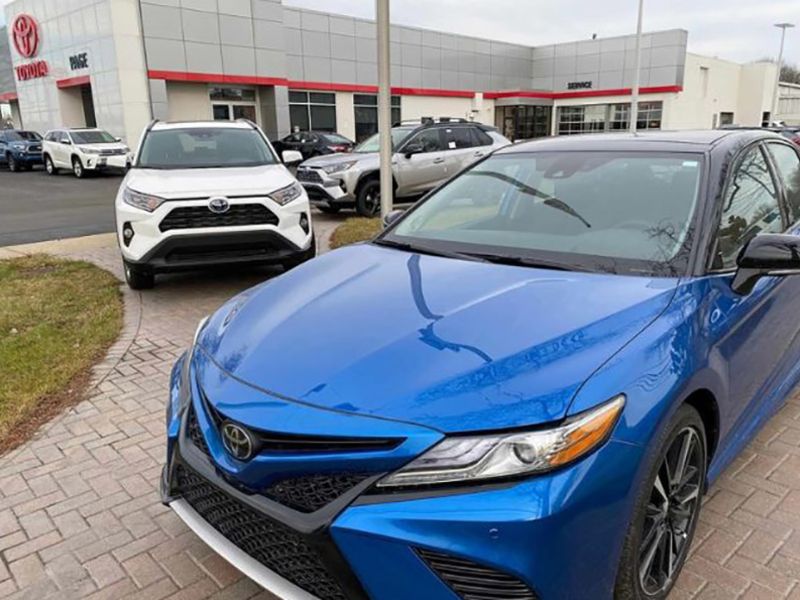
Toyota’s U.S. dealers are coming off their best weekend since the coronavirus pandemic hit in late March in a continuing display that buyers are once again ready to purchase new vehicles, executives said Monday.
But while retail demand is still down about 15 percent from the same point a year ago, the industry is likely to go through several “lumpy” months this summer as automakers continue to ramp up plants after extended shutdowns and reconfigure output in the face of anemic fleet demand, said Bob Carter, head of sales for Toyota Motor North America.
Speaking to reporters on a conference call, Carter said the automaker is seeing several signs that retail demand is strong, including a more than 50 percent jump in quality Internet leads from the automaker’s Tier One Website.
“We’re seeing the retail consumer be very, very resilient,” Carter said. “We’re running about 82 to 85 percent of the same retail level that we did last year. What is not recovering that we’re seeing is the commercial and fleet buyers.”
Carter said industrywide production shutdowns beginning in late March have limited inventories for every automaker, especially for the next few months. While production is ramping back up, it will take time for automakers to meet returning retail demand, and that is likely to lead to falling incentives.
“We’re in this situation, both Toyota and industrywide, of a little bit of industry imbalance,” he said. “The reason I say that is that we’re optimistic, but the sales volumes that you see reported by us in the industry are going to be a little bit lumpy for the next few weeks as we start filling our supply chains up.”
Toyota restarted its manufacturing operations across most of North America on May 11 and has been slowly ramping up since then, said Chris Reynolds, head of manufacturing for Toyota Motor North America. He said Toyota plants have had workers infected with the virus, but in all cases the sources of those infections have been from community spread outside of work and no production stoppages have resulted.
“I can say that we’re not going full-out, we’re not there yet, in part because of the governmental restrictions,” said Reynolds. “But we are hopeful that as those restrictions ameliorate that we’ll be able to meet demand in the coming months.”
Toyota had earlier adjusted its full-year projections for the industry from about 17 million to 13.6 million units in the U.S. and said the seasonally adjusted, annualized rate remained pretty consistent through most of May and into the first half of June at about 12.2 million vehicles.
A large portion of industry weakness remains in fleet demand from rental-car companies. For Toyota, which has traditionally maintained a fleet percentage under 10 percent, the lack of demand has largely meant reconfiguring upcoming Corolla and Camry production for retail customers instead of fleet buyers, which usually buy vehicles with fewer options, Carter said. So far dealers have filled the slack in demand, he said.
Carter said Toyota has temporarily changed some of its marketing efforts to boost the attractiveness of its certified pre-owned vehicles to respond to demand from customers coming out of leases. It also has been moving vehicles from regions hardest hit by the virus, including the Northeast, to regions where business has been more “robust,” including Texas, Florida and Arizona. He said the vast majority of CPO vehicles are being purchased online by Toyota and Lexus dealers without having to go to auction.
“Right now, our fleet people are telling me that we’re pacing almost 40 percent beyond our initial plan for certified sales this month. So, so far, so good,” Carter said.